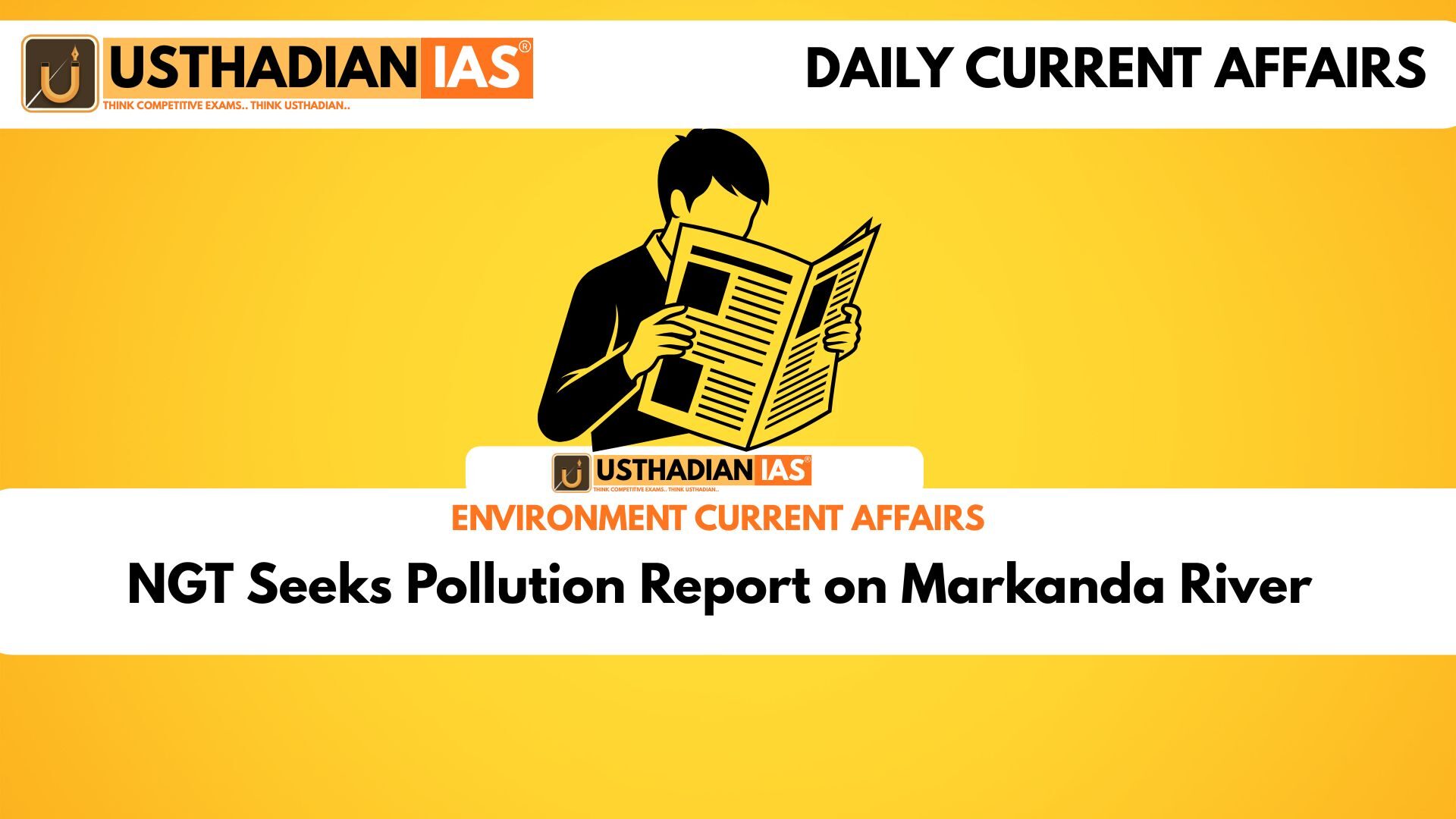NGT Directs Pollution Assessment
NGT Seeks Pollution Report on Markanda River: The National Green Tribunal (NGT) has directed Himachal Pradesh and Haryana Pollution Control Boards to submit detailed reports on the contamination levels in the Markanda River. The order was passed by Justice Arun Kumar Tyagi, following concerns over industrial waste and sewage polluting the sacred river, which is vital for local agriculture and domestic use.
The directive mandates an examination of drains entering the Markanda River, identification of industrial connections, and evaluation of compliance with Zero Liquid Discharge (ZLD) norms.
Static GK fact: The NGT was established on 18 October 2010 under the National Green Tribunal Act, 2010, to handle cases related to environmental protection and conservation.
Effluent and Sewage Control Measures
The NGT instructed the Himachal Pradesh State Pollution Control Board (HPSPCB) and the Haryana State Pollution Control Board (HSPCB) to analyse water samples from all discharge points. If pollution is detected, they must propose remedial measures and report on actions taken.
The Kala Amb Infrastructure Development Company was also ordered to submit a status report on effluent transportation and the quality of treated water at various discharge locations.
Static GK Tip: Zero Liquid Discharge (ZLD) is a wastewater treatment approach that ensures complete recycling of water, leaving no liquid waste released into the environment.
Origin of the Case
The current order arises from a 2022 petition filed by Dharamvir, highlighting industrial pollution in Kala Amb, Himachal Pradesh. The petitioner alleged that untreated effluents were directly entering the river, threatening aquatic life and human health.
The Markanda River, a tributary of the Ghaggar River, originates from the Shivalik Hills at the Himachal–Haryana border. Its clean flow is essential for maintaining local ecosystems and supporting agricultural livelihoods in both states.
Significance of CETP and Industrial Compliance
The NGT emphasised the role of Common Effluent Treatment Plants (CETPs) in industrial zones like Kala Amb. These facilities treat wastewater from multiple small and medium-scale industries before discharge. Non-compliance by industrial units with CETP or ZLD norms can lead to serious legal and environmental consequences.
Static GK fact: India’s first CETP was established in Vatva, Gujarat, in 1983, to help small industries manage effluent treatment collectively.
Importance of the Markanda River
The Markanda River holds religious importance and sustains thousands of farmers in Haryana and Himachal Pradesh. It eventually merges with the Ghaggar River, which flows through Punjab and Rajasthan. Protecting this river is crucial to ensure clean water for irrigation and drinking purposes.
Static GK Tip: The Ghaggar River is often identified with the ancient Saraswati River, mentioned in Vedic texts, adding cultural significance to its tributaries like Markanda.
Static Usthadian Current Affairs Table
NGT Seeks Pollution Report on Markanda River:
| Topic | Detail |
| Tribunal involved | National Green Tribunal (NGT) |
| Order issued by | Justice Arun Kumar Tyagi |
| States directed | Himachal Pradesh and Haryana |
| River under focus | Markanda River |
| Major issue | Industrial effluents and sewage pollution |
| Petition filed by | Dharamvir (2022) |
| Monitoring agencies | HPSPCB, HSPCB, Kala Amb Infrastructure Development Company |
| Treatment systems | Common Effluent Treatment Plant (CETP), Zero Liquid Discharge (ZLD) |
| Origin of river | Shivalik Hills, Himachal-Haryana border |
| Tributary of | Ghaggar River |








